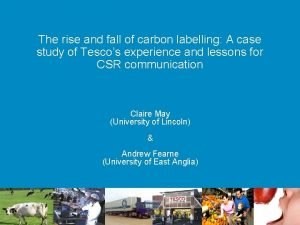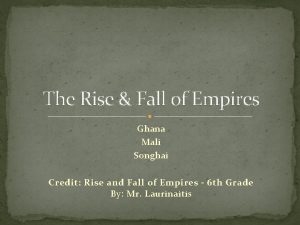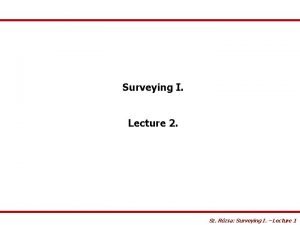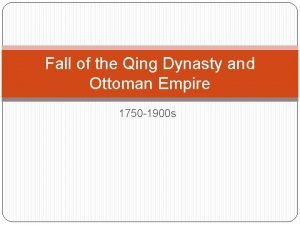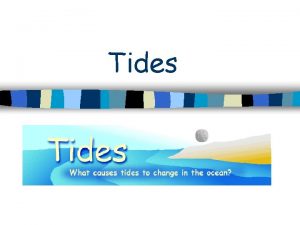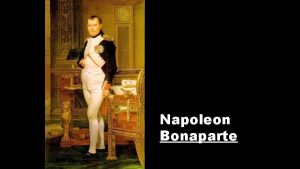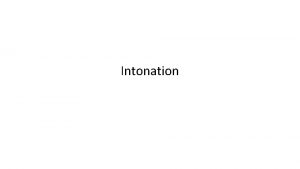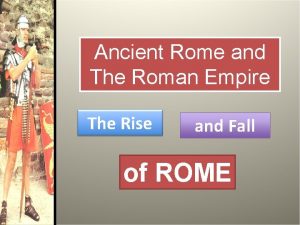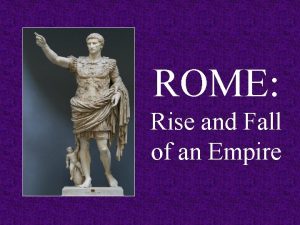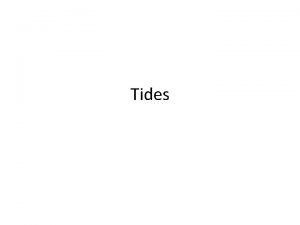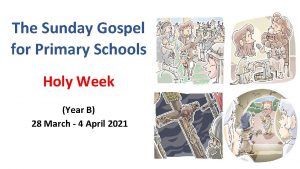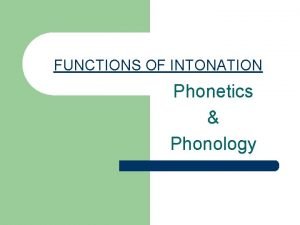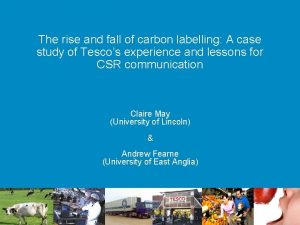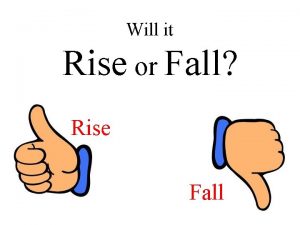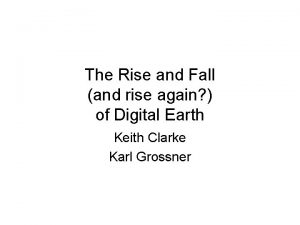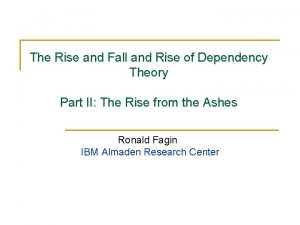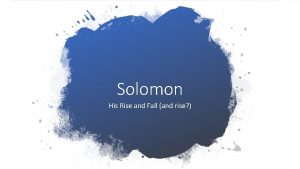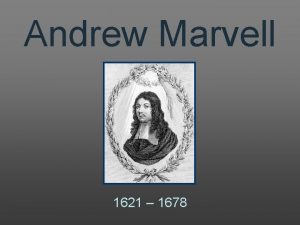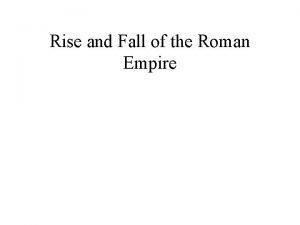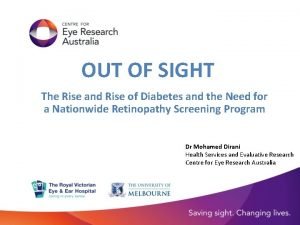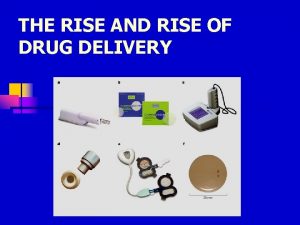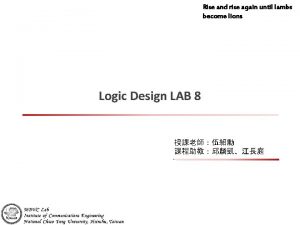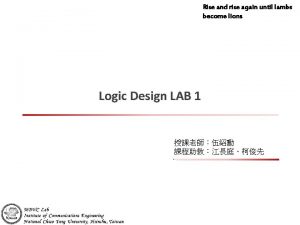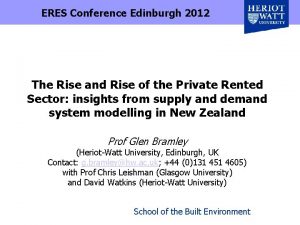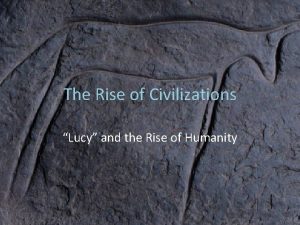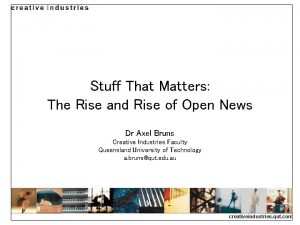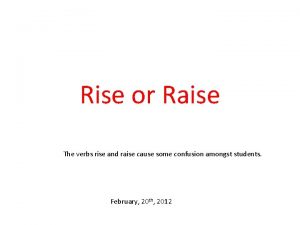Professor Andrew Fearne The rise and fall of



























- Slides: 27

Professor Andrew Fearne The rise and fall of carbon labelling: A case study of Tesco’s experience and lessons for Making the. CSR most communication of our access to dunnhumby (Tesco Clubcard) data Claire May (University of Lincoln) & Andrew Fearne (University of East Anglia)

Presentation Outline • Conclusions • Context • Research Project • Results

Conclusions

Behavioural Change behaviou r Point of Purchase (Behaviour) Attitude – Intention - Behaviour Gap Pre-store (Intensions) Change attitudes Necessary but not sufficient Increase Knowledge Raise Awareness

Behavioural Change • • Assumptions are the mother of all f*** ups! Looking at the market in aggregate and from afar leaves us ‘blind’ to the interface between ‘people’ and ‘products’ where it matters most… at the point of purchase

Behavioural Change • • Labelling of sustainability (credence) attributes most likely to have greatest impact upstream (certification) but don’t expect consumers to lead the way, despite their reported willingness to pay! Sustainabilty (whatever it means) is an aspirational state that the market will fail to deliver – regulation is inevitable but will be too little too late so…

Behavioural Change We are all doomed!

Context

Research Context – Sustainability Challenges: Solutions: • Complex • Holistic Social • Dynamic • Multi-disciplinary • Cross-functional • Universal • Multiple stakeholders FOOD Economic Environmental

When good intentions go astray (Halkier, 1999) • Danish “Demand” for Organics 30% • Actual sales 4 – 5%

When good intentions go astray (Bird & Hughes, 1997) • • 23% UK consumers “ethical” Sales of Fair Trade c. 3%

When good intentions go astray (O’Rourke, 2004) • • 86% US consumers willing to pay more for ethical goods US Market share ethical goods 3. 5%) • US Market share of NIKE…. . 43%

Type 1 and Type 2 thinking (Kahneman, 2011) • Most buying decisions for FMCG (low involvement) are driven by Type 1 thinking – fast – instinctive – emotional • Type 2 thinking more relevant for capital/investment goods (high involvement) – slower – more deliberate – more rational • Despite the billions of dollars spent on branded advertising to build customer loyalty, the Grocery Marketing Association of America (GMA) estimates that 70% of purchase decisions are made at the point of purchase Mo

Research Project

Case study – Tesco Carbon label • Tesco was the first major retailer to trial carbon labelling as a mechanism for enabling shoppers to make more informed choices • Their carbon labelling initiative was an integral part of their CSR activities and positioned Tesco at the forefront of “a new revolution in green consumption” (Leahy 2007). • In April 2008 Tesco launched their initial trial using the Carbon Trust’s Carbon Reduction Label on twenty products from four categories (washing detergent, orange juice, light bulbs and potatoes). • More products and other product categories (milk, kitchen towel and toilet tissue) were subsequently added before the quiet announcement came, in 2012, that Tesco would not be continuing with the project, claiming the lack of consumer uptake and the lack of interest from other retailers as the major reasons behind their decision (Vaughan 2012)

Carbon Label Project (2008 – 2011) • • Ph. D Studentship - Sponsored by Defra Objective - Identify ways in which supermarkets can help shoppers make more sustainable purchasing decisions Focus - Carbon Labelling § Role of pre-store and in-store situational factors Mixed Methods § Stage 1 - identify reasons for current behaviour and barriers to behaviour change (Focus groups) § Stage 2 - experimental Intervention (pre-store and in-store) § Stage 3 - determine impact on attitudes and perceptions (instore shopper interviews, parent survey, teacher interviews) and behaviour (dunnhumby data)

Conceptual Framework - Path to Purchase Important but long-term – not the focus of this research PRE-STORE SITUATIONAL FACTORS INDIVIDUAL CHARACTERISTICS e. g. Awareness, knowledge, meal occasion, e. g. attitudes, values, beliefs shopping mission NON PURCHASE MOTIVATION ABILITY OPPORTUNITY INTENTION BEHAVIOUR PURCHASE Some scope for intervention – raise awareness and increase knowledge IN-STORE SITUATIONAL FACTORS e. g. marketing (packaging, labelling, promotions), merchandising (availability, POS) Most scope for intervention behaviour change

Carbon Label Project - Interventions • • • n Focus on Young Families § Amenable to change – influence from children, higher level of ‘involvement’ in food purchasing decisions § Diverse range of constraints – budget, time, meal occasions, shopping missions Pre-store - Work with primary schools to raise awareness (parents and children) In-store – Raise (shopper) awareness and facilitate low carbon purchases Stores selected were geographically dispersed (Newcastle, York, Southport, Blackpool, New Malden, Borehamwood, Poole, Slough) the highest in terms of footfall (young families) and customer penetration (carbon labelled products)

Pre-store Intervention : Carbon Footprint Week § All primary schools within a 5 mile radius of the selected Tesco stores were contacted via letter/phone § 270+ Education Packs sent out • Age appropriate inter-curricular lesson plans and related materials linked to climate change, carbon footprints and carbon labelling • Homework Challenge – to go to a specified Tesco store with a parent • Display Competition - cash incentives • 15 (6%) schools known to have participated

Carbon Label Project - in-store Interventions § Tesco staff wearing green carbon label t-shirts and handing out leaflets

Carbon Label Project - In-store Interventions q Shelf talkers

Carbon label Project - In-store Interventions § Carbon footprint floor sticker in entrance

Results

Carbon Label Project - Evaluation (pre-store) Parents (90 responses to on-line survey) § 70% claimed their awareness of carbon labelling increased as a result of their child’s involvement in Carbon Footprint Week § 54% claimed their understanding of carbon labelling increased as a result of their child’s involvement in Carbon Footprint Week § 28% claimed that they had purchased low carbon products as a direct result of their child’s involvement in Carbon Footprint Week § 13% claimed they would be ‘extremely likely’ to purchase carbon products in the future

Carbon Label Project - Evaluation (in-store) Shoppers (786 respondents to store exit survey) § Without prompting, 32% of respondents noticed something different in the store, of which 19% noticed the leaflets, 10% noticed the green T-shirts but only 1 respondent noticed the shelf talkers § When prompted, 17% claimed to have noticed more information in store about carbon footprint labels, of which the majority noticed the leaflets (nobody mentioned the shelf talkers) § 20% claimed awareness of Tesco’s carbon labelling, the majority of whom made an association with environmental issues § 10% claimed they had previously made a purchase decision specifically due to the information on the carbon label § 28% said that carbon labelling will definitely influence their purchasing behaviour in future (53% said it would possibly do so)

Carbon Label Project - Evaluation (behaviour) § Analysis of dunnhumby data revealed no significant impact on the sales of carbon labelled products (or lower rating variants thereof) Source: dunnhumby (2010)

THANK YOU! Andrew FEARNE Professor of Value Chain Management Norwich Business School University of East Anglia Norwich Research Park Norwich NR 4 7 TJ � 01603 597239 a. fearne@UEA. ac. uk
 Andrew fearne
Andrew fearne Richard nixon tricky dicky
Richard nixon tricky dicky Rise and rise again until lambs become lions
Rise and rise again until lambs become lions Little lambs academy
Little lambs academy A union b example
A union b example Promotion from assistant to associate professor
Promotion from assistant to associate professor The periodic daily rise and fall of ocean water
The periodic daily rise and fall of ocean water Fall of songhai empire
Fall of songhai empire Assignment
Assignment Rise and fall method surveying
Rise and fall method surveying The fall of the qing dynasty
The fall of the qing dynasty Leveling rise and fall method
Leveling rise and fall method Spring tide and neap tide
Spring tide and neap tide Napoleon timeline
Napoleon timeline Intonation definition
Intonation definition Ancient rome: the rise and fall of an empire cast
Ancient rome: the rise and fall of an empire cast Rome rise and fall of an empire
Rome rise and fall of an empire Relevance lost the rise and fall of management accounting
Relevance lost the rise and fall of management accounting The periodic daily rise and fall of ocean water
The periodic daily rise and fall of ocean water Hitler birth
Hitler birth On what continent is ancient greece located
On what continent is ancient greece located Mali rise and fall
Mali rise and fall Andrew chinn rise up
Andrew chinn rise up Rising and falling tones
Rising and falling tones Functions of intonation.
Functions of intonation. Hình ảnh bộ gõ cơ thể búng tay
Hình ảnh bộ gõ cơ thể búng tay Slidetodoc
Slidetodoc Bổ thể
Bổ thể
